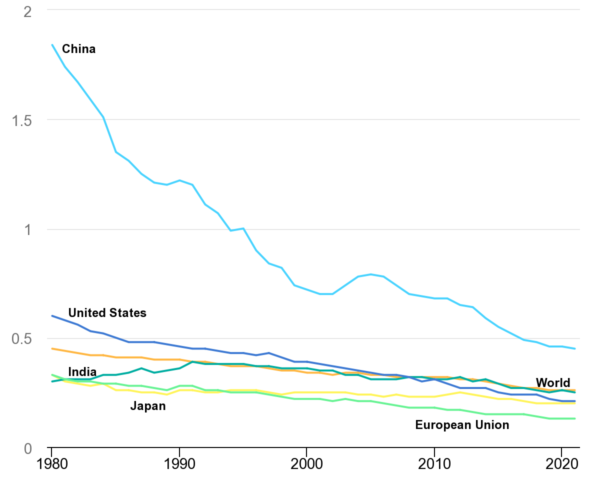As global economies rebounded from the Covid-19 crisis, the increase in coal use spiked CO2 emissions over 2 billion tonnes, the largest ever, according to the IEA report “Global Energy Review: CO2 emissions 2021”.
The increase in global CO2 emissions more than offset the previous year’s pandemic-induced decline, according to IEA analysis. Adverse weather conditions and increases in the price of natural gas are the reasons given for the spike in emissions, both of which led to more coal being burned despite renewable power generation registering its largest ever growth.
According to the report, over 40% of CO2 emissions came from coal, while natural gas accounted for emissions well above 2019 levels. Oil, on the other hand, saw more limited use due to transportation problems and the reduction in air travel.
The numbers indicate that the recovery process did not heed the advice of the IEA report “Sustainable Recovery” report, written in conjunction with the International Monetary Fund. The report was written to inform governments of the unique opportunities presented in the economic recovery to boost economic growth, create jobs, and reduce CO2 emissions in the quest to reach net zero emissions by 2050 globally.
The good news is that many advanced economies have set decarbonization goals, and according to the IEA’s Sustainable Recovery Tracker, as of October 2021, $470 billion had been earmarked for sustainable measures within recovery packages through 2030. The bad news is that it’s not enough—representing only 40% of the investment needed according to Sustainable Recovery Plan,
Despite it not being enough, according to the IEA recommendations, renewables-based generation exceeded 8,000 terawatt-hours (TWh) in 2021, a record 500TWh above its 2020 level. Output from wind and solar increased by 270TWh and 170TWh, respectively, while hydro generation declined due to the impacts of drought, notably in the US and Brazil.
China also saw its largest ever increase in renewable power output in 2021; however, China was also the greatest contributor to CO2 emissions, where they increased by 750 million tonnes between 2019 and 2021.

IEA
The emissions increases in those two years in China more than offset the aggregate decline in the rest of the world over the same period. In 2021 alone, China’s CO2 emissions rose above 11.9 billion tonnes, accounting for 33% of the global total.
The Global Energy review concludes that the world can still achieve net-zero by 2050, but only with sustainable investments combined with the accelerated deployment of clean energy technologies.
This content is protected by copyright and may not be reused. If you want to cooperate with us and would like to reuse some of our content, please contact: editors@pv-magazine.com.









By submitting this form you agree to pv magazine using your data for the purposes of publishing your comment.
Your personal data will only be disclosed or otherwise transmitted to third parties for the purposes of spam filtering or if this is necessary for technical maintenance of the website. Any other transfer to third parties will not take place unless this is justified on the basis of applicable data protection regulations or if pv magazine is legally obliged to do so.
You may revoke this consent at any time with effect for the future, in which case your personal data will be deleted immediately. Otherwise, your data will be deleted if pv magazine has processed your request or the purpose of data storage is fulfilled.
Further information on data privacy can be found in our Data Protection Policy.